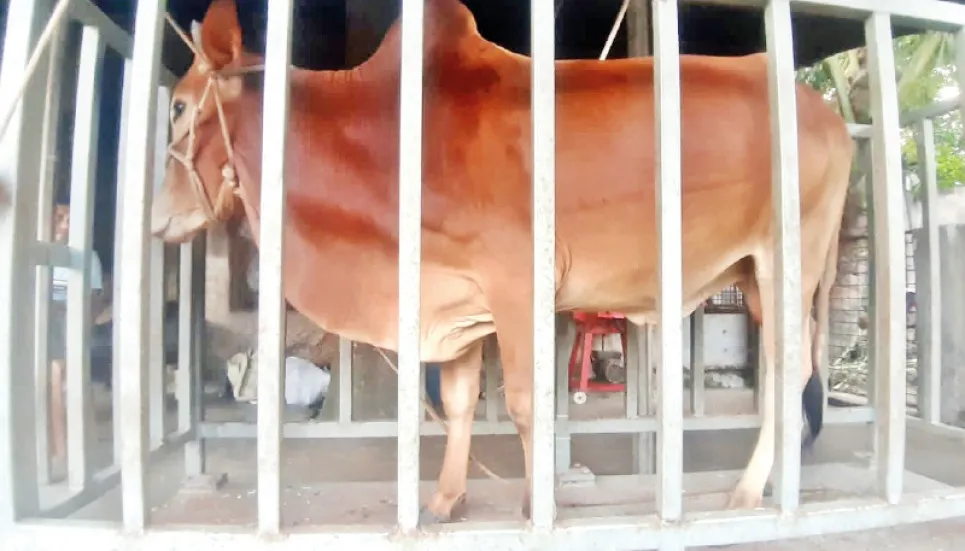Home ›› 06 Jul 2022 ›› Back

The trade of sacrificial animals hits its yearly peak ahead of Eid-ul-Azha, and in the last few years, sale of cows and goats under the live-weight method has gained significant momentum in Bangladesh.
Usually, buyers and sellers engage in an intense and in-person bargaining process at a cattle market, debating on a price based on hypothetical measurements of weight and meat quantity.
But under the live-weight system, the weight of a live sacrificial animal is measured using a digital scale, this gives more bargaining power to both parties, and helps eliminate any possibility of fraud, industry insiders told The Business Post.
This convenient system is primarily used by online cattle traders and cattle firms who directly sell to consumers.
Traders say the live-weight method for purchasing sacrificial animals is getting more popular every year, especially among people who do not want the hassle of visiting a cattle market in-person.
According to cattle sellers, buying a cattle under the live-weight method usually ensures around 60 per cent to 65 per cent meat and meat with bone to buyers. A cow sold under this system costs about Tk 420 – Tk 450 per kg, while a goat costs around Tk 500 to Tk 550.
Rimon Khan, owner of Khan Farm House in Savar’s Genda, said, “Cattles are weighed in digital scales. A sacrificial animal sold this way will contain around 60 per cent of meat, bone with meat and liver of cows and goats, excluding the intestines, hide and head.”
Asaduzzaman Bhuiyan Rubel, owner of Handshake Agro in Gazipur’s Kapasia area, said, “The buyers buy meat in the kitchen market at a cost of Tk 650 – Tk 700. Under the live-weight system, the price of a cow’s hide, intestines, head, legs, blood, are included.
“So, even if a live cow is sold for Tk 420 – Tk 450 per kg under this system, considering the animal’s weight, the price of its meat would cost Tk 700 to Tk 800 per kg.”
About the estimated price, Mahamudul Islam – who owns ARC Agro in Thakurgaon’s Pirganj area, said, “Suppose a cow weighs around 100 kg, then it would sell for Tk 45,000 as the customer will pay Tk 450 per kg under the live-weight method.
“Sixty per cent out of 100 kg, will get us around 60 kg of meat. At the current market price, if we got Tk 2,000 from skin and intestines, the price per kg of meat will be around Tk 750. The calculations are the same for goat prices.”
Traders thoroughly explain this system to customers interested in buying cattle this way. Rimon, Rubel and Islam said they have already sold around 60 per cent – 65 per cent of their farm cows under this method, and hope to sell all their stock before the Eid-ul-Azha.
The live-weight cattle sales have the potential to grow further if it gets enough publicity, they added.
Speaking about challenges, the traders said the costs of cattle feed and rearing have gone up, but the cattle prices remained more or less the same. Despite the hurdles and rising inflation, many traders are selling sacrificial animals at reasonable prices, they added.